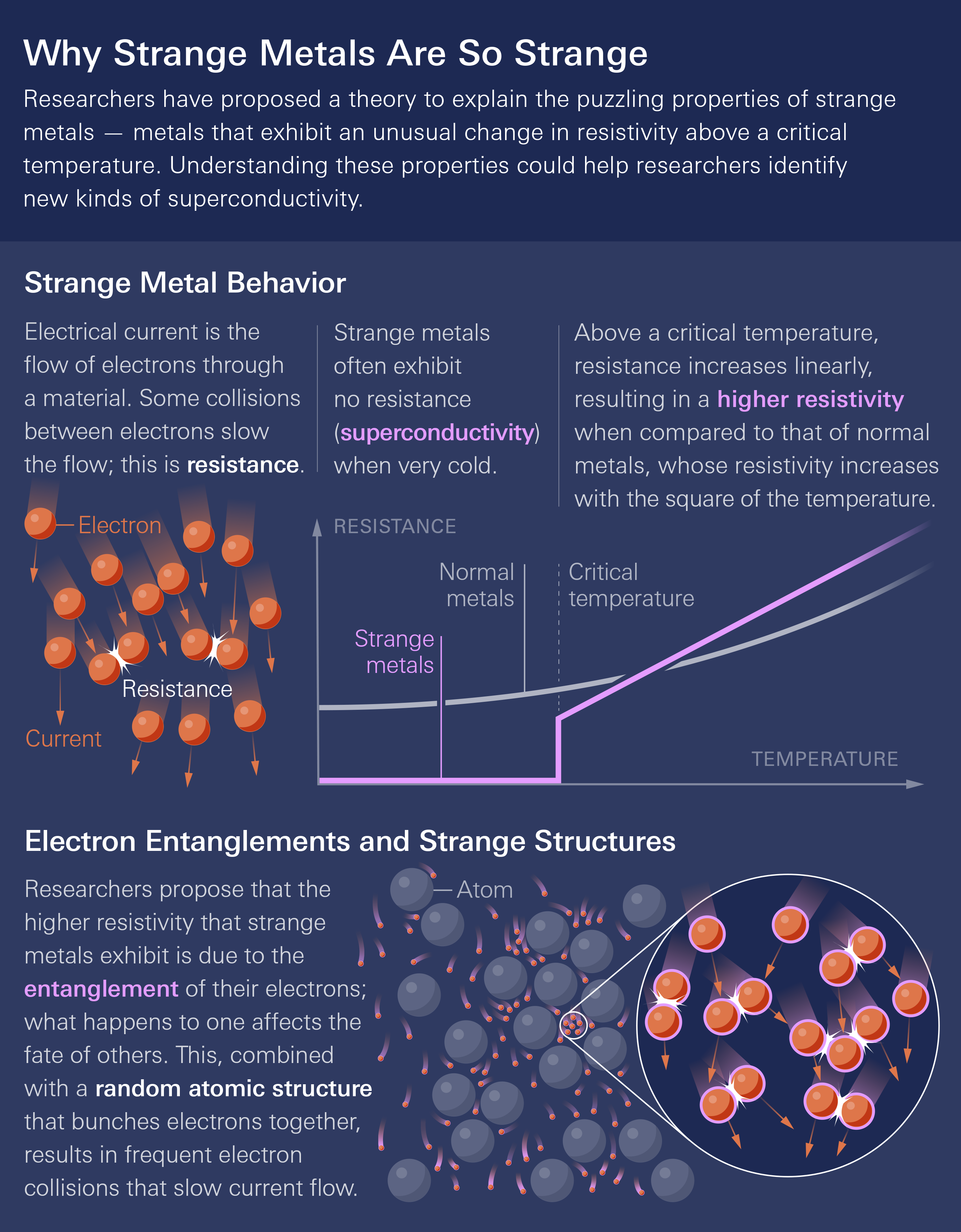The curious way certain materials conduct electricity, which has led to them being labeled “strange metals” may have been explained after four decades. A team of physicists have proposed an answer they say is so simple it was overlooked by people expecting something more complex.
Claims of a superconductor that works at room temperature and pressure have been refuted, but the dream endures. Strange metals may well provide the real breakthrough since they are frequently superconductors at very low temperatures. However, to make them work in warm conditions, with the vast benefits this would provide, probably requires understanding their strangeness, and collaborators from some of America’s leading physics research schools claim they finally do.
Many things may be strange about metals, but the term “strange metals” is given to a group with unusual electrical behavior. Superconductivity at low temperatures is a common feature of strange metals, but it is not what makes them distinctive. Their exceptional property is that once they do start to resist the flow of electricity, this resistance rises linearly with temperature, rather than being proportional to the square of the temperature as is the case for other metals.
Being a strange metal is not necessarily a permanent condition. Strange metal behavior starts to break down as temperatures rise further but can last long enough to present a major puzzle.
Strange metals follow a very different relationship between resistance and temperature from other metals.
Image Credit: Lucy Reading-Ikkanda/Simons Foundation
As a material’s temperature rises, the atoms move around more, impeding the flow of electrons, which we measure as electrical resistance. The Fermi liquid theory explains why resistivity is dependent on temperature squared, and for decades physicists have been puzzled about why strange metals don’t fit expectations.
Dr Aavishkar Patel of the Flatiron Institute is first author of a paper proposing this behavior can be explained based on a combination of two known strange metal properties. One of these is the quantum entanglement of two electrons traveling in an electrical field, a crucial aspect of superconductivity. The second is the mixed arrangement of their atoms.
Because strange metal atoms contain regions of densely packed atoms and others that are much more dispersed, electron behavior differs depending on where their entanglement occurred, the authors propose. Pairs of electrons experience different conditions as they move between areas with different concentrations, and resistance occurs as they move from one to the other.
“This interplay of entanglement and nonuniformity is a new effect; it hadn’t been considered ever before for any material,” Patel said in a statement. “In retrospect, it’s an extremely simple thing. For a long time, people were making this whole story of strange metals unnecessarily complicated, and that was just not the right thing to do.”
Why anyone would assume an unexplained quantum behavior was complex is beyond us – it’s not like the rest of the field is famously hard to understand.
The findings could prove useful in tweaking materials to make them superconductors, potentially including some that might do it at ambient temperatures.
“There are instances where something wants to go superconducting but doesn’t quite do so, because superconductivity is blocked by another competing state,” Patel added. “One could ask then if the presence of these nonuniformities can destroy these other states that superconductivity competes with and leave the road open for superconductivity.”
Recently, a double peak in the absorption spectrum of ytterbium was hailed as a possible clue to what makes it a strange metal, and possibly a feature of the whole category. Patel’s work would represent a much more general solution.
Patel is proposing that strange metals get a name change to “unusual metals” now their behavior is understood, but it might not produce quite the same fascination.
The study is published in Science.
Source Link: A New Explanation For “Strange Metals” Could Lead To Better Superconductors
